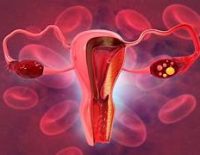Researchers develop Brain Network Identification Number

Researchers at Indian Institute of Technology Guwahati have developed a novel algorithm Unique Brain Network Identification Number (UBNIN) designed to encode the intricate brain networks of healthy humans and patients with Parkinson’s disease (PD).
The study involved analysis of structural brain MRI scans of 180 PD patients and 70 healthy individuals from National Institute of Mental Health and Neurosciences (NIMHANS), India. The researchers adopted a network perspective, representing different brain regions as nodes and establishing connection values of the network based on regional grey matter volume.
The hence obtained numerical representation (UBNIN) was observed to be distinct for each individual brain network, also applicable to other neuroimaging brain modalities. This innovative research holds immense potential in the realm of brain printing and emerges as a promising biomarker with numerical value for tracking mental illness progression over time.
Also, Parkinson’s disease, a neurodegenerative disorder, with clinical symptoms such as tremors, stiffness, and slow movement, worsens with age. In a first-of-its-kind study, IIT Guwahati and NIMHANS researchers used non-invasive structural MRI scans during rest. The study delved into how age impacts the brain connectivity over varying sparsities. For each age cohort, clustering coefficient presented a decreasing trend with increasing sparsity.
Explaining the research findings, Dr. Cota Navin Gupta, Assistant Professor, Neural Engineering Lab, Department of Biosciences and Bioengineering, IIT Guwahati said, “UBNIN is a special number representing unique characteristics of each human brain from a network perspective. Interestingly, we can also reverse engineer any human’s UBNIN value to reconstruct the original brain network. This UBNIN algorithm will enable us to identify and characterize (encode-decode) brain networks of every human beings efficiently.”
PhD Scholar Ms. Tanmayee Samantaray further added, “Applying UBNIN algorithm on longitudinal neuroimaging data (i.e. over time) holds promise for elucidating the dynamics of brain plasticity (i.e. changes in human brain). This insight is crucial to understand how the human brain degenerates, and copes with damage due to underlying neurological diseases.”
The developed UBNIN algorithm makes MRI data interpretable and holds a potential to transform neurodegenerative disorder diagnosis and treatment. This may be used as a biomarker to complement other diagnostic tests recommended by neurologists. UBNIN’s applications range from brainprinting to optimizing storage for structural MRI brain networks. This could open avenues for low-bandwidth, high-speed information transfer of human brain networks for Telemedicine and related applications.








Comments